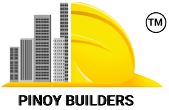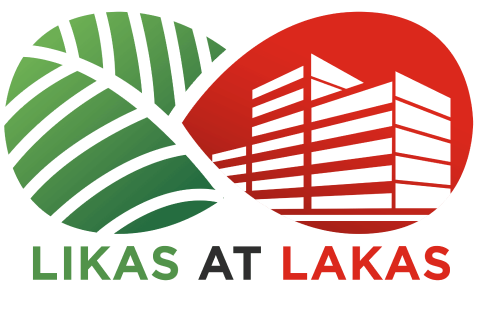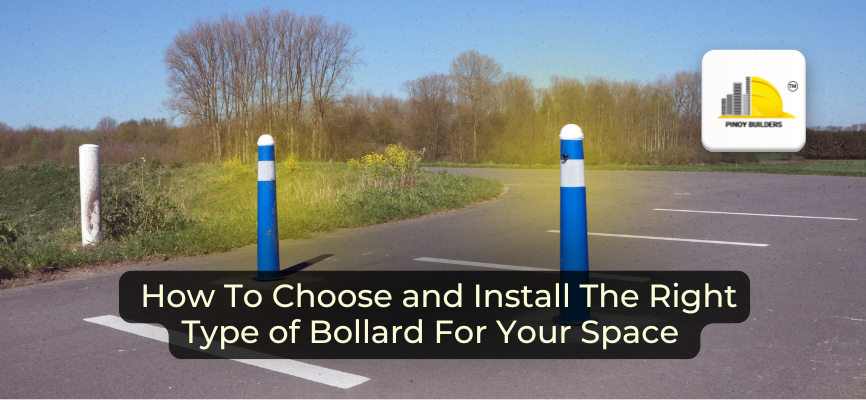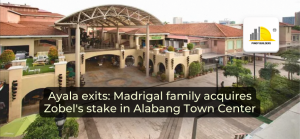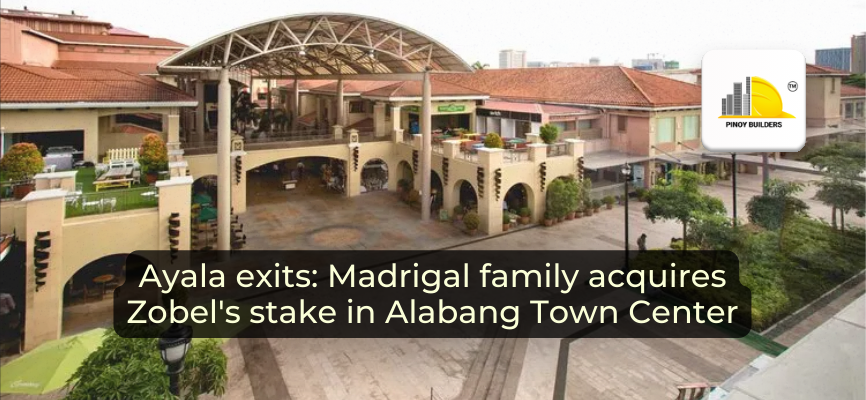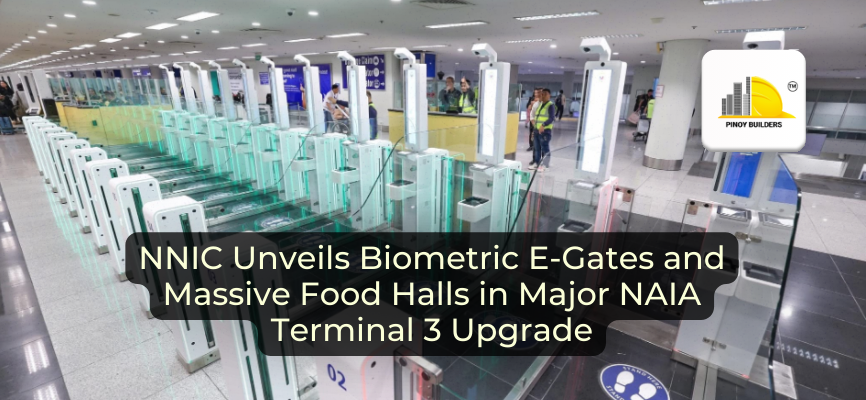On May 4, 2025, an SUV crashed into the Departure West Curbside Area of NAIA Terminal 1, killing two people and injuring several others. According to the Philippine National Police Aviation Security Group, both victims died of blunt force trauma—something that could have been prevented if the bollards had been buried deep enough.
Confirmation from the Manila International Airport Authority (MIAA) about the shallowly installed steel bollards raised concerns about the effectiveness of safety barriers in public spaces. Navigating busy streets and areas in the country already feels like an obstacle course, with motorcycles swerving onto sidewalks, parked cars taking up walk spaces, and now, the fear of improperly installed safety barriers adds to the growing fear among pedestrians and commuters.
Crosswalks and signage don’t always stop accidents. This is why physical barriers like bollards are essential urban design features. They help define space, guide movement, and protect people from harm. Above all, they must be properly installed.
Pedestrian safety should never be overlooked. It must be a top priority in any space where pedestrians and vehicles intersect. In this article, we will share a guideline on how to choose the right type of bollard for your space, where to place them effectively, and what to consider during installation to boost both safety and function.
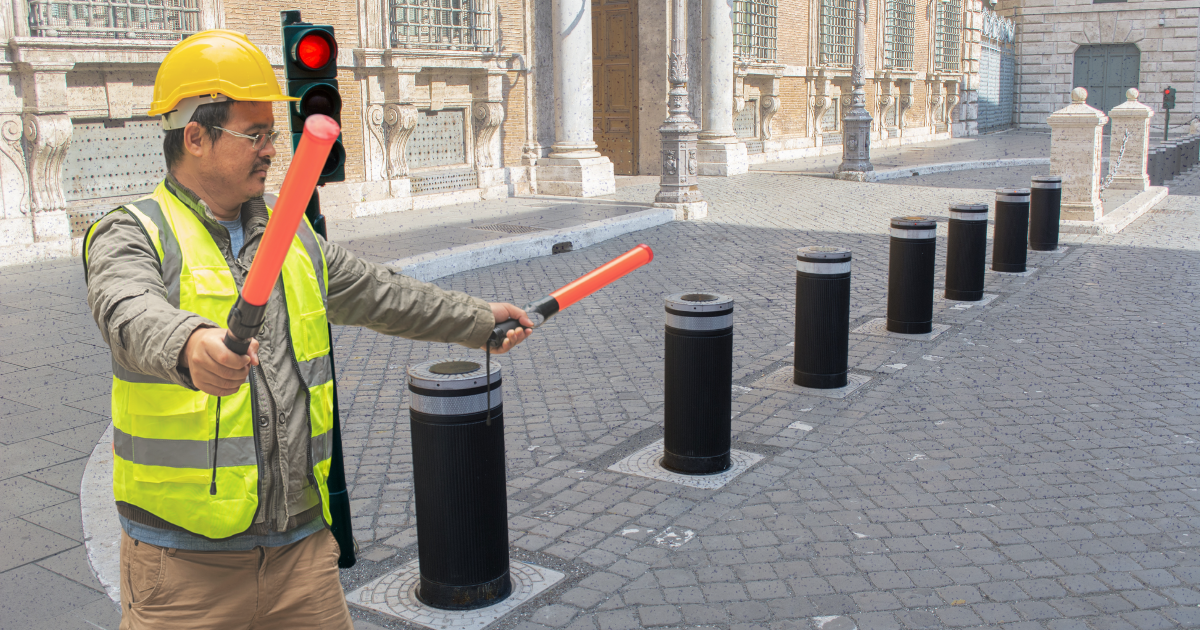
Bollards: More Than Meets the Eye
Bollards are short, sturdy posts designed to block vehicle access while allowing people to pass. Commonly installed along sidewalks, in front of buildings, or around public parks, they serve as more than just architectural perimeters for a property. When bollards are installed, both the safety and security of residents and pedestrians are ensured.
For vehicles, bollards function both as visual guides and as additional safety barriers. In the event of a vehicle crash or intentional attack, bollards absorb impact and prevent vehicles from reaching pedestrians or property. They also support urban planning goals by clearly marking vehicle-free zones.
Different Types of Bollards for Different Needs
Bollards come in various forms, each designed for specific settings. Each type serves a purpose depending on whether the area is commercial, residential, or mixed-use.
1. Fixed/Embedded
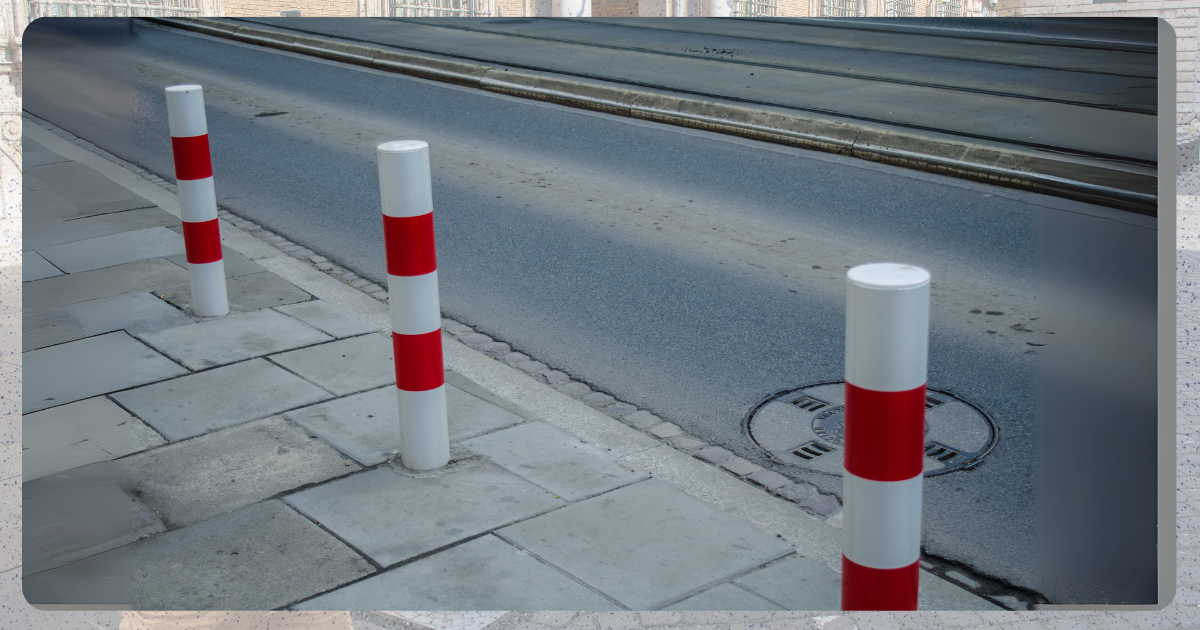
Image from Kent Stainless Steel
Best for permanent use in high-traffic or sensitive areas.
Often found in/around:
- Around pedestrian lanes/areas
- Government facilities
- Airports
- Retail stores
- Commercial buildings
2. Removable
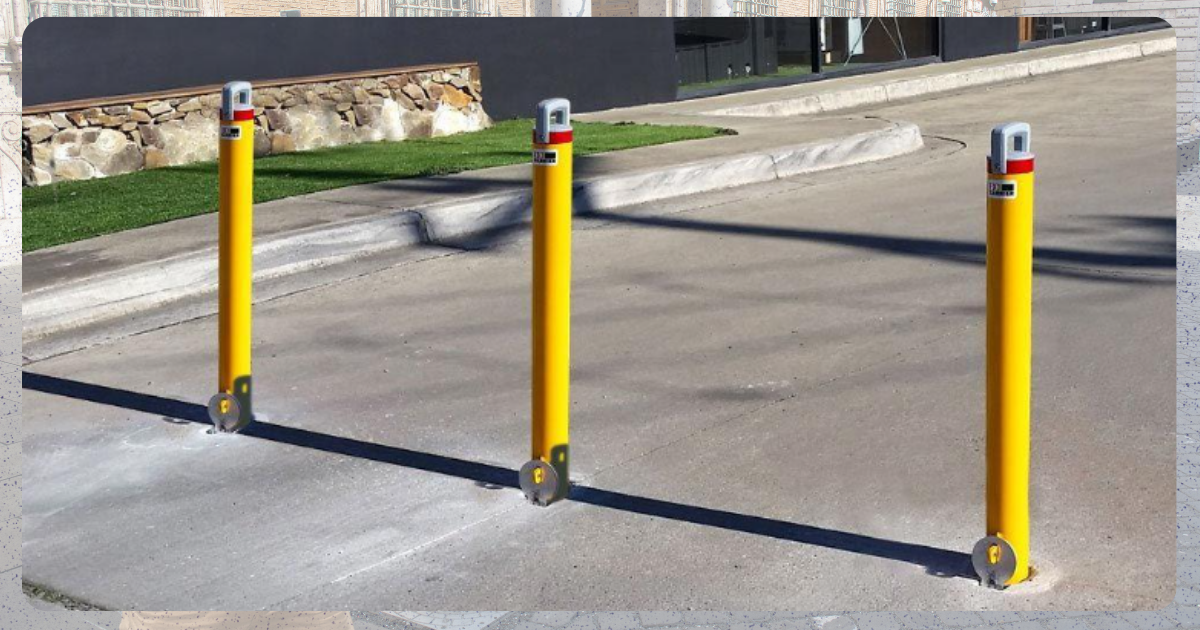
Image from Barsec Australia
Suitable for events or temporary access zones.
Often found in/around:
- Parking lots/seasonal parking spaces
- Streetscapes with heavy pedestrian traffic
- Temporary events like farmer markets, concerts, and street fairs
3. Retractable

Image from ArchiExpo | Nakatsa Security
This is perfect for areas that occasionally permit cars, such as loading bays.
Often found in/around:
- Apartment buildings
- Public parks/recreational areas
- Amusement centers
- Schools
- Entrance areas for emergency and utility vehicles
- Loading bays
4. Flexible/Plastic
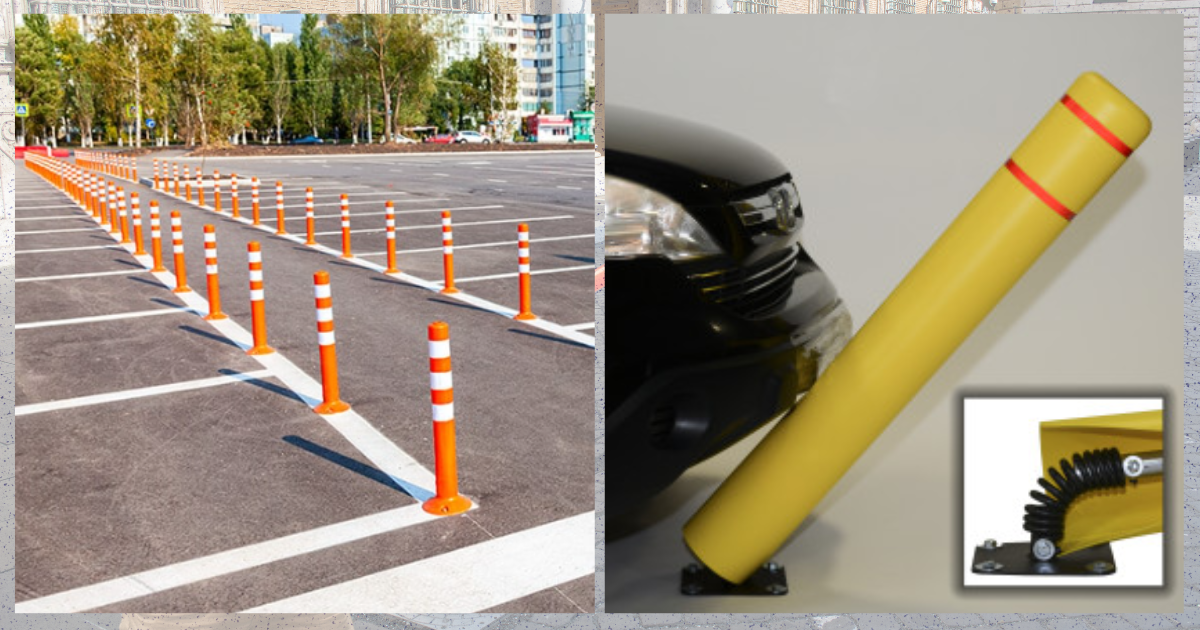
Image from Reliance Foundry Co. Ltd. | Post Guard
Common in residential areas or light-traffic roads where visibility is more important than resistance.
Often found in/around:
- End of parking stalls
- High-traffic areas
- Construction sites
- Gas stations/meters
- Areas where traffic regulation is necessary
Standard Length of Bollards in the Philippines
It is important to note that there is no specific standard size for a bollard, and the sizes will vary depending on the manufacturer, type, design, and purpose.
For reference, international wire and metal products manufacturer Cogan states that a standard bollard should measure 4 ½ inches in diameter and be welded to a 10″ x 10″ x ½” thick base plate, which includes four ¾-inch punched holes located 1 ½ inches from the edge of each corner. In general, a fixed bollard with concrete should be at least 450 – 600 mm buried into the ground, and observe a 3-foot spacing from each installation.
Bollard Installation in the Philippines
Bollards are essential components in enhancing pedestrian safety and preventing vehicle access in public spaces. However, to be effective, bollards must be installed correctly.
While bollard installations are not specifically discussed in the National Building Code of the Philippines, PD 1096, Section 1106, mandates the use of protective measures such as railings, fences, and canopies to safeguard pedestrians from potential hazards. Flexible and removable bollards can fall under this category.
Implementing Rules and Regulations (IRR) of Batas Pambansa Blg. 344 requires the accessibility of public and private buildings and facilities to persons with disabilities and provides detailed guidelines on the design and installation of bollards. These guidelines specify requirements such as minimum luminance contrast, height, spacing, and surface smoothness to ensure that bollards do not obstruct or pose hazards to pedestrians, especially those with disabilities.
Step-by-Step Guide to Properly Install a Fixed Bollard
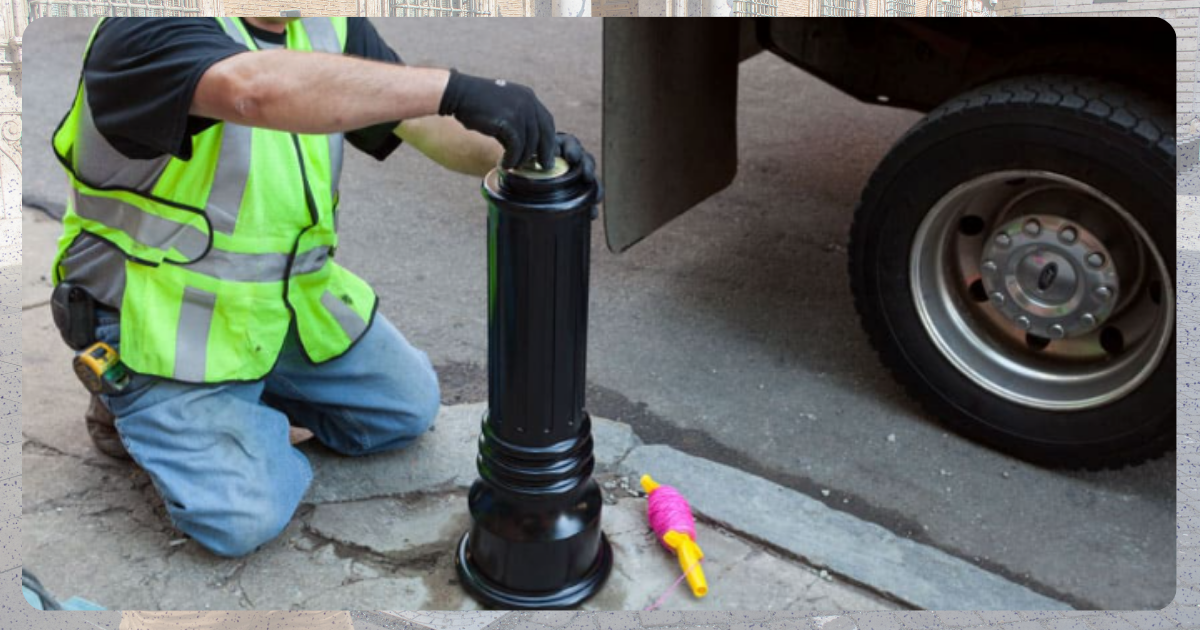
Image from Reliance Foundry Co. Ltd.
Since there are different types of bollards, the proper installation method for each one varies. Local regulations may also affect the standard installation in your area. Make sure to reach out to your LGU for clear guidelines on how to properly install the bollard of your choice.
Below is a simple, standard guide on how to install a fixed bollard.
1. Prepare the Site
- Ensure the area where the bollard will be installed is cleared of debris and any obstructions.
- Check the terrain to determine if the installation location is level. Bollards don’t need to be level, but the appearance should be considered, especially if the terrain is uneven.
2. Excavate for the Foundation Tube
- Dig the necessary excavation for the bollard foundation tube. You can either create individual excavations for each bollard in an array or a common excavation for multiple bollards, depending on the design.
- For better isolation of concrete damage from impacts, it’s recommended to use individual foundations for each bollard.
3. Set the Foundation Tube
- Place the foundation tube into the excavation. This tube will form the base of the bollard.
- If needed, use temporary wooden frames or steel straps to hold the tube in alignment during the pouring of the concrete.
4. Secure the Module
- If necessary, use concrete blocks or other temporary supports to level and secure the bollard module in place within the foundation tube.
- To keep the bollard in alignment during the pour, weld steel straps or rolled shapes to the tube.
5. Pour the Concrete
- Pour concrete into and around the bollard foundation tube. Ensure the concrete fills the tube completely, leaving no air pockets.
- Be careful not to trap any air inside the structure. Steps should be taken to evacuate any trapped air to ensure a solid and stable foundation.
6. Fill the Bollard Tube
- After pouring the concrete around the foundation tube, also fill the bollard tube itself with concrete.
- To ensure the bollard has a strong anchor to the ground, fill the tube completely.
7. Install the Bollard Cover Plate
- Place the bollard cover plate on top of the filled bollard tube.
- Ensure the exposed anchor rebars are embedded in the concrete as it cures to secure the bollard properly.
8. Allow Concrete to Cure
- Allow the concrete to cure and set for the recommended amount of time to ensure the bollard is securely anchored.
9. Final Inspection
- Inspect the installation to ensure the bollard is firmly in place and properly aligned.
- Check the appearance to make sure the bollard follows the intended contour of the terrain, if necessary, while maintaining visual consistency.
10. Corrosion Protection (if needed)
- If the installation site is wet or subject to highly acidic or basic conditions, consider adding anodic protection to prevent corrosion.
- Consult a specialist if corrosion protection is required for your specific site conditions.
Picking the Right One
Property owners and planners should assess various factors that can influence the function of the bollard. Here are some of the things to consider when choosing a type for your project:
- Foot traffic levels
- Vehicle risks
- Local design requirements
Aesthetic appeal should never outweigh functionality, especially in zones with heavy pedestrian movement. To make sure that you are picking the best type for your space, consult with a safety professional about compliance and effectiveness.
Proper Installation Makes All the Difference
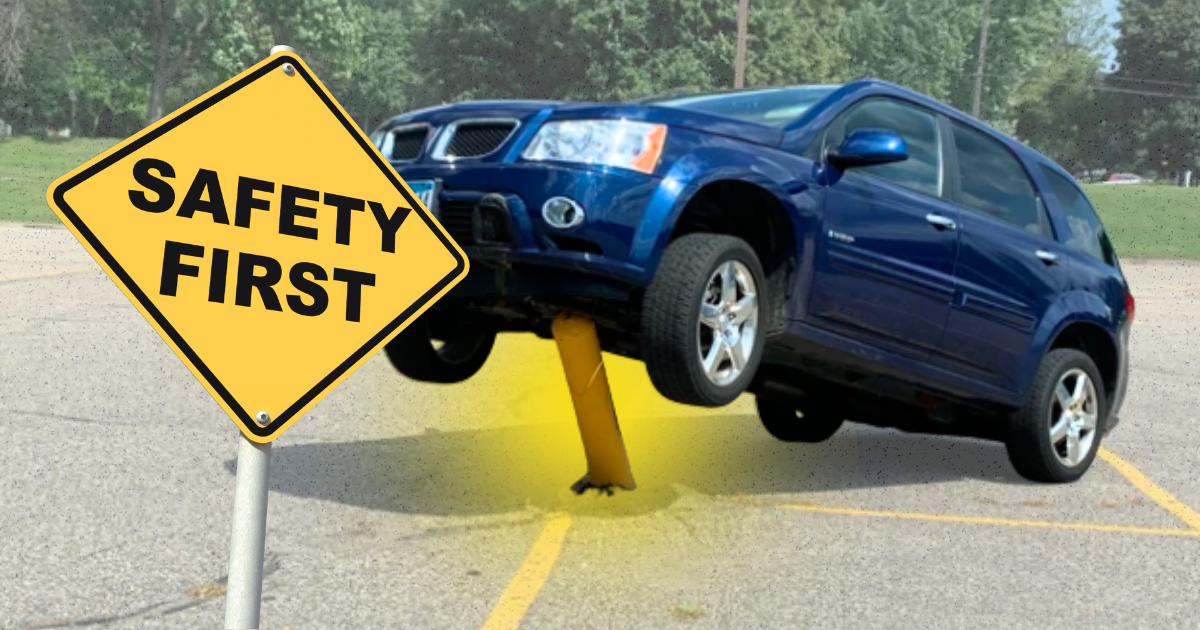
Bollards that are poorly installed may shift, crack, or collapse on impact. Placement, depth, and spacing significantly influence their effectiveness. Using the right materials and following safety standards ensures that these barriers function as intended when it matters most.
The recent accident in NAIA that claimed two innocent lives highlights the importance of public safety barriers such as bollards. Accidents are unpredictable, but preparation and planning are always possible.
The bollards were pulled out from the ground by the SUV that crashed in Terminal 1, failing to reduce the impact or the severity of the accident. According to MIAA General Manager Eric Ines, the shallow placement was due to the arrival area directly beneath the installation site.
“It might penetrate (too deep into the concrete) and fall onto something (in the arrival area),” he said.
However, the decision to install shallow bollards defeats the very purpose of the barrier, a point tragically underscored by the fatal accident on Sunday. Gabriela party-list Rep. Arlene Brosas is among several concerned government officials calling for an investigation into the seemingly defective bollards.
“When contractors cut corners and use substandard materials, when officials turn a blind eye to proper inspections, it is the Filipino people who pay the ultimate price,” Brosas said.
Meanwhile, Transportation Secretary Vince Dizon ordered the creation of a special task force to address the growing number of fatal accidents that occurred during Holy Week. The task force includes DOTr, LTO, and the Land Transportation Franchising and Regulatory Board. It will focus on reviewing existing road safety policies and the process of issuing driver’s licenses. Dizon emphasized the importance of taking road safety seriously.
“We need to take road safety seriously, especially with large vehicles, like buses and trucks. Those are the ones that can kill other road users,” he said.
Bollards serve a greater purpose than just marking boundaries. They are life-saving features whose effectiveness depends not only on placement but also on proper selection and secure installation. In busy public spaces, well-chosen and properly installed barriers protect both property and pedestrians.
References
The Bollard Shop. (n.d.). Bollard Installation Best Practices. The Bollard Shop. Retrieved May 6, 2025, from https://www.bollardshop.com.au/blog/bollard-installation-best-practices/
Fisher, R. (n.d.). Safety Bollards: Types, Installation, & Benefits | Bollards Blog. Reliance Foundry Co. Ltd. Retrieved May 6, 2025, from https://www.reliance-foundry.com/blog/safety-bollards
The Role of Bollards in Creating Safer Pedestrian Crossings Home / Bollards / The Role of Bollards in Creating Safer Pedestrian Crossings bollard a Eckliang 21 October, 2024 10:14 pm No Comments Table of Contents Introduction In today’s urban environments,. (n.d.). Street Secu. https://www.streetsecu.com/the-role-of-bollards-in-creating-safer-pedestrian-crossings
Steelmark. (n.d.). Surface Mounted Bollards Installation Guide. Steelmark. https://steelmark.com.au/installation-guides/surface-mounted-bollards-installation-guide
